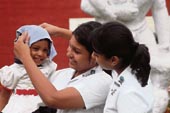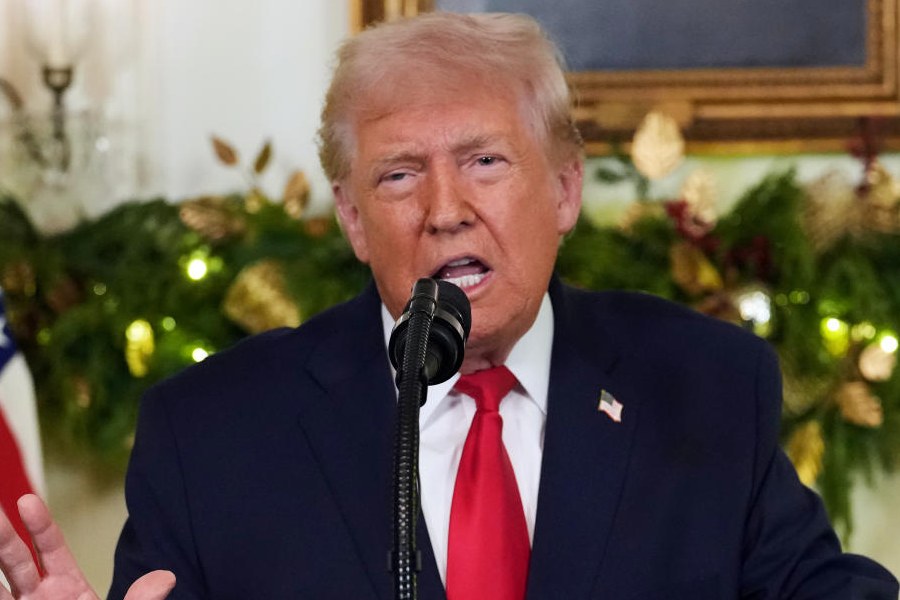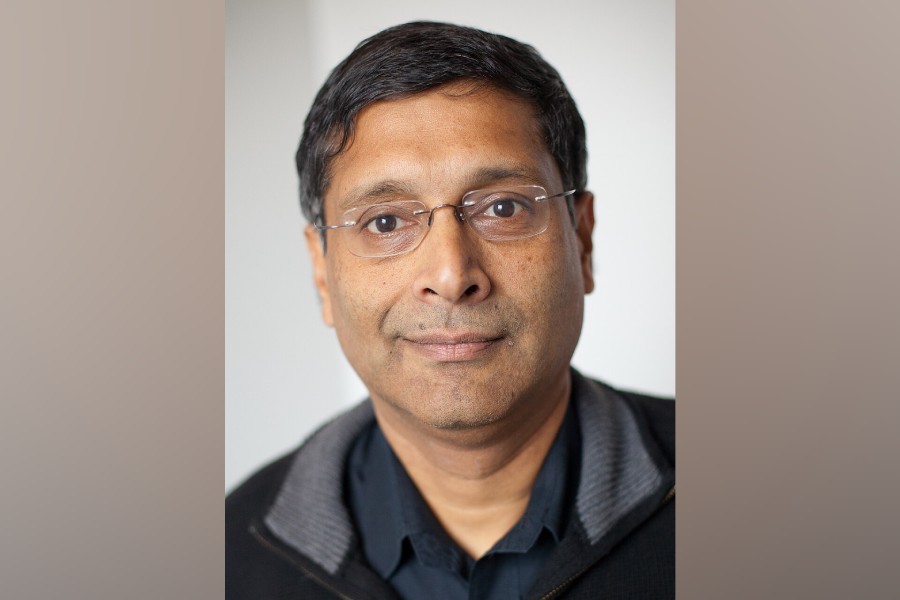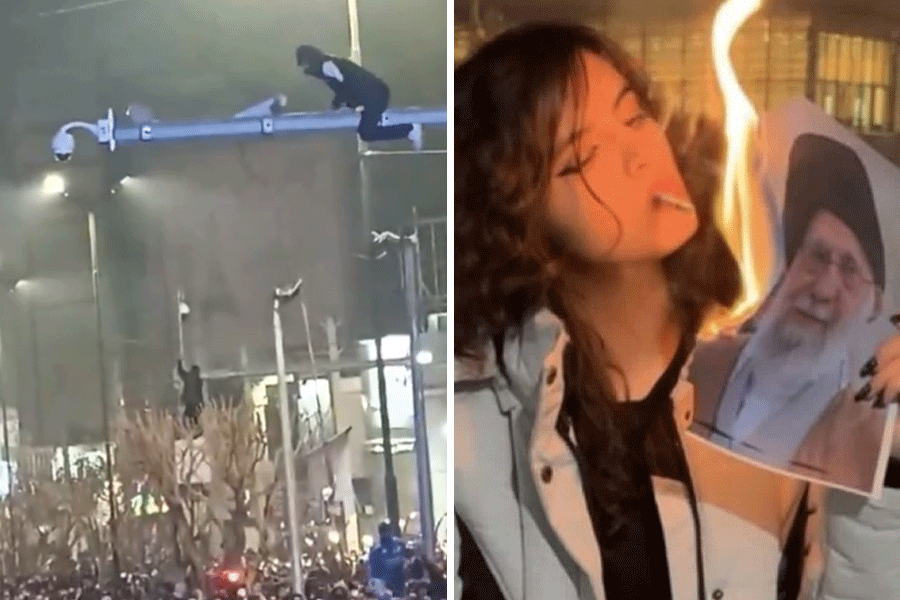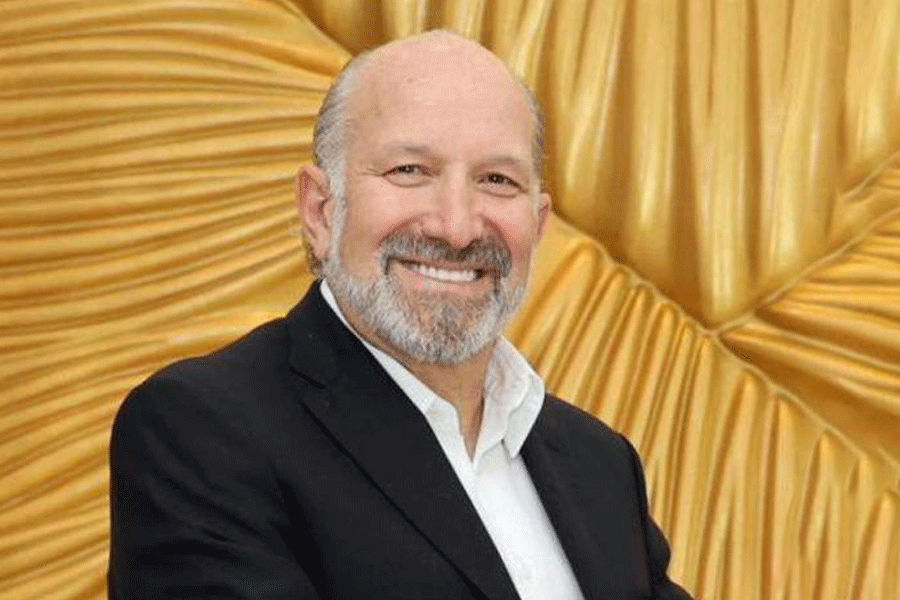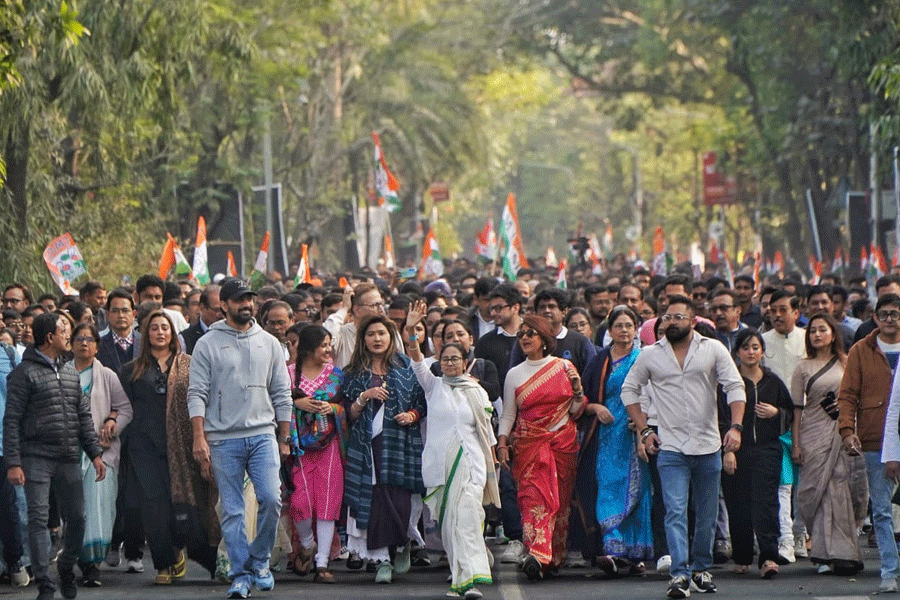 |
 |
| The toddlers were happy to have some company and oodles of love and affection from students of La Martiniere. But the Interact Club members had another purpose for their visit to the SOS Children’s Village in Salt Lake. The youngsters handed over a cheque for Rs 66,000 to the NGO for its tsunami rehabilitation projects in Tamil Nadu and Pondicherry. The money will be used to help build new homes for 11 children. A representative from the Interact Club will travel to the area soon to meet the kids. Pictures by Sanjoy Chattopadhyaya |
It was a moment?s decision, but based on a lifetime of experiences. For Tirthankar Guha Thakurta, making the film Piku Bhalo Aachhey (Piku Is Fine) was meant to pass the time between the end of exams and the start of classes. But the theme of homosexuality turned the film into a vehicle of change.
In 2004, the student of Calcutta National Medical College got together some friends who decided making a film would be a useful way to fill the time gap. What began with about five expanded to a group of 22 friends and family members. After a shooting schedule of about four-and-a-half days spread over a month, Piku Bhalo Aachhey was born.
?I chose the theme from my own experience, because I thought the LGBT (lesbian, gay, bisexual and transgender) issue was important, to highlight the problems faced by these people and to dispel misconceptions in society,? says the final-year medical student.
The filmmaking was the result of a concerted effort (story, script and direction, as well as playing the lead role of Piku, was Tirthankar). Cinematographer Sayak Ghosh used his handycam to shoot the film, one of the lead actors, Anirban Ghosh, offered his home as the set while assistant director Sayantan Das Gupta, like everyone else, did a bit of everything.
?It was a group effort. Only the editing was done in a studio. We couldn?t find someone willing to play Piku?s mother, so my mother did it,? Tirthankar smiles. The hardest part, he confesses, was writing the script.
The story is about a student who is ridiculed and harassed by his college mates because of his homosexuality, while his family can?t fathom the concept when he comes out. It debuted in June last year at the 2nd International Conference on Masculinity, Sexuality and Culture in South Asia in Bangalore. Since, it has been screened at the Siddhartha Gautam Film Festival organised by SAATHII in Calcutta for the past two years as well as numerous events on LGBT and HIV/AIDS in Mumbai, Delhi and Chennai.
?At first, I was apprehensive about the reception the film would receive. The true test was at the 10th Kolkata Film Festival at Nandan in December, because this was open to the public, where people already sensitised and aware of the issue weren?t the only ones watching. There were even children at the screening. Initially, the audience laughed at Piku and understood the sentiments of those who harassed him. Towards the end, several sympathised with Piku. Many of them spoke to me afterwards, saying they were touched. That, for me, was the best experience,? says the 22-year-old.
Although Tirthankar is reluctant to speak about his forthcoming project, which he has already started on, there are several issues he wants to address, like friendships between homosexual and heterosexual men, bisexuality and child rights. ?I have received great support from Calcutta audiences and the media,? he signs off.
Nisha Lahiri
 |
Forgotten footballer
He was one of the most illustrious names in Indian football, but Dr Sanmatha Dutta?s 100th birth anniversary on May 6 went almost unnoticed. India?s first national football captain also played for Mohun Bagan for 13 years and was second only to Gostho Pal when playing in the defence. But even his club seems to have forgotten him.
It was at Ravenshaw Collegiate School that Dutta first tasted the thrill of sport. It was a hockey match, but the accolades aplenty made him believe in his abilities. It was his first day on the field, but he outplayed many. This was how Dutta discovered the sportsman in him. It shaped his life in many ways, he later wrote in an article titled Mohun Bagan O Ami.
Mohun Bagan was his dream team and Gostho Pal his idol. As a student of Campbell Medical School researching kala-azar he first got the chance to see Mohun Bagan play, for a four-anna ticket. He later wrote about his experience of seeing players like Gostho Pal and Umapati Kumar in action. A few years later, Dutta played alongside Pal in Mohun Bagan, from 1927-34. From 1931-33 he captained the club.
During a match in 1929 between the Indian XI and a European XI, Dutta was not selected for the team. But on the day of the match he was substituted for another player in the left-half position. The rest, as they say, is history. It was this ability to play in any position except left-out and goalkeeper that made Dutta unique. He was a centre-forward in college, then a right-half and centre-half in his early days on the Maidan. Later, he played as a defender.
He was equally good with both legs ? a quality he thought a must to be a complete football player. Dutta led an Indian football team to South Africa on its first tour abroad. Two years later, in 1936, he led the IFA team against a visiting Chinese Olympic team. Dutta was a good friend of Kazi Nazrul Islam and often arranged match tickets for the poet.
After retirement, he served as a hockey umpire, athletics and swimming judge, football referee and president of the Calcutta Referees Association from 1967-68. He was also a college champion in tennis. By profession he was a doctor, as playing football in those days earned little for the players. While in Mohun Bagan, Dutta studied medicine at Campbell (now Nilratan Sircar Medical College) and earned the LMF diploma. Twenty years later when MBBS was introduced, he took the exam and passed from RG Kar Medical College.
?After retirement, he wrote about football in newspapers and magazines. One day, a cheque for Rs 300 arrived for an article he had written. He was so amazed, saying ?I didn?t earn anything by playing football, but now I can do so by writing about the game?,? recalled Madhuri Dutta, daughter-in-law.
Football in those days was not just a game, but a means to hit back at the British rulers. A strong spirit of nationalism was built around football, especially after the barefoot Mohun Bagan players beat the East Yorkshire Regiment to clinch the 1911 IFA shield tournament. Dutta, a strong believer in Gandhian philosophy, never wore anything that was not India-made.
 |
| Tirthankar Guha Thakurta (left) in a scene from Piku Bhalo Aachhey |
But the country no longer remembers its first football captain. Dr Sanmatha Dutta is an obscure name to most. ?People these days know nothing except Ronaldo or Beckham. Ask them to name a player in the national side and there?s no reply,? said Kamal Basu, former mayor of Calcutta in whose apartment Dutta lived for many years. In fact, it was on the initiative of Kamal Basu?s family that Mohun Bagan club was established.
His birth centenary year passes without celebration. Even the Mohun Bagan website has different variations of his name, referring to him as Dr Manmatha Dutta in the captains? list. Amidst cricket craziness and Bollywood blitz, India?s first national football captain has gone into oblivion.
Subhajoy Roy
 |
| Creativity with mehndi was one of the activities at a vocational workshop for young women organised by Rotary Club of Calcutta Victoria and the self-help counselling centre at Jyotirmai Club. Picture by Sanjoy Chattopadhyaya |
Risk & reward
A meeting of youth and industry leaders took place last week, when the Bengal National Chamber of Commerce and Industry (BNCCI) and AIESEC, the world?s largest youth organisation, held a panel discussion on ?Visionary Leadership ? The Road Ahead? on June 24 at the BNCCI auditorium.
The seminar focussed on entrepreneurship through real-life examples. The panelists were Rahul Saraf of Forum, Santanu Ghosh of Aamar PC, Prof Ranjan Ghosh of IIM-C, Prof Ranjan Thakur, vice-chancellor, West Bengal University of Technology, Prasanto Sengupta of Ernst & Young. The discussion was moderated by Barun Das of Exide Industries. The opening speeches were delivered by S. Nundy, president, BNCCI, and Kamil Gandhi, president, AIESEC Calcutta.
The discussion gave insights into the how and why of entrepreneurship to improve the economy and how institutions of higher learning are empowering young entrepreneurs to take up these challenges.
Rahul Saraf presented his views on how organised retail has grown as the most developing sector in the global economy, providing facts and figures which gave a clear picture on the importance of the huge market potential. He enlisted steps for entrepreneurs to benefit from this $ 8 trillion-dollar global sector. ?India has the largest youth population in the world, and in the years to come, India will be one of the leading entrepreneural nations in the world,? he added.
Taking risks is one of the key ingredients for an entrepreneur. Prof Ranjan Ghosh of IIM-C said: ?Entrepreneurs have to take risks and still be confident while contributing to society.? Prasanto Sengupta enlisted three key essentials for a leader ? vision, self-improvement and support from the industry.
There were also perspectives from the IT Industry from Santanu Ghosh, who gave the young AIESECers a brief outline of the growing IT Industry and how his entrepreneural abilities made Aamar PC a success.
Barun Das ended the discussion with the statement: ?Entrepreneurship is intuition, passion and a belief in oneself and the ability to take risks no matter what. It?s the ability to see the opportunity and seize it. A leader makes people follow his vision, vision has to be shared. The first step to leadership is initiative.?
 |
| Ahana, an organisation working for social and cultural awareness, and Crossword presented ‘Images — Poetry in Transition’, on July 2 at the Elgin Road bookstore. After readings by poets young and old was a talk on the future of English and Bengali poetry in Calcutta. Picture by Sanjoy Chattopadhyaya |
Theatre treat
On June 28, Caffeine, on Elgin Road, was turned into an opera stage of sorts, with Parnab Mukherjee directing and acting in a series of theatrical pieces dedicated to Third Theatre pioneer Badal Sircar. His staccato-like dialogue delivery was complemented by Janardan Ghosh?s spirited histrionics in Hindi.
Presented by the group Best of Kolkata Campus, the play was a protest against war and global violence, with references to Iraq, George Bush and Gujarat, assimilated with extracts from Badal Sircar?s Bhul Rasta.
The music for the play was performed by youth band Jack Rabbit, which rendered a series of anti-war songs ? Bob Dylan?s Blowin? in the wind, Cranberries?s Zombie, John Lennon?s Imagine, the Rolling Stones?s Sympathy for the devil... Some original anti-war verses were also read, accompanied by gentle strumming on the guitar strings.
With audience interaction with the actors and the soulful songs, the evening saw a marriage between art and protest at the unlikely venue of a coffee shop.

